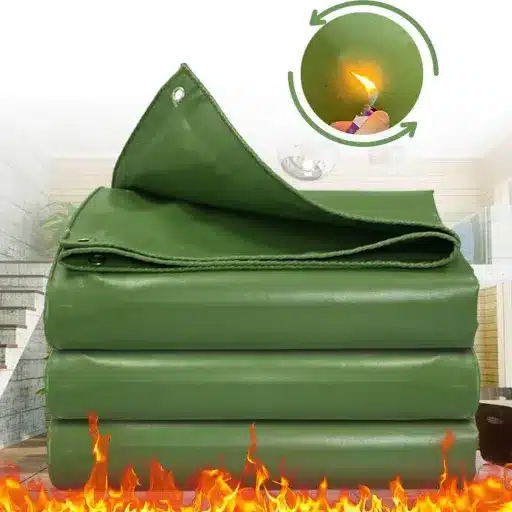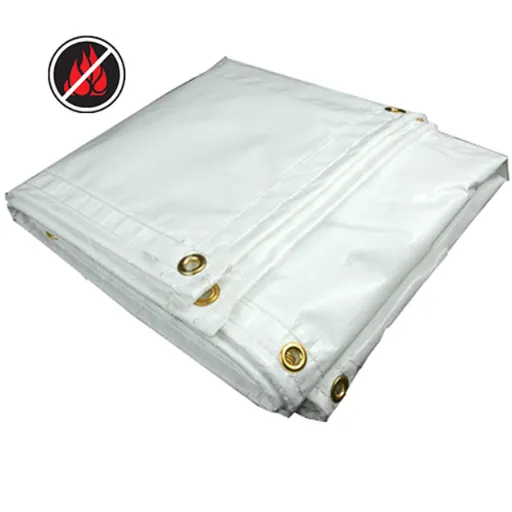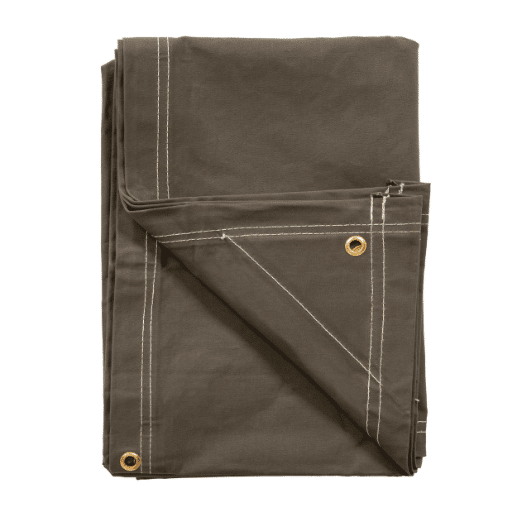An important consideration while choosing the right plastic sheeting for a project is its thickness. Among all options, 10 mil plastic sheeting claims the best durability and versatility. But how thick is 10 mil, and what relevance does it have for the fabrication world? Whether on a construction site, doing a series of home improvements, or in agriculture applications, knowing the real stuff about 10 mil plastic can help decide which material fits the job. The article aims to uncover what “10 mil” really means, compare it with others, and talk about the utmost areas of applications for plastic sheeting, thus helping you with making an educated choice.
What is 10 Mil Plastic?
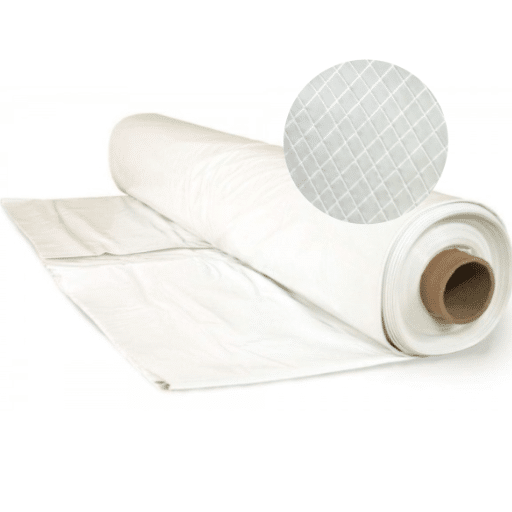
Defining Mil and Mil Thickness
A “mil” is a unit of measurement used to specify the thickness of materials, especially plastic sheeting. One mil equals one-thousandth of an inch (0.001 inch). This measurement helps standardize the comparison of the strength and robustness of the many different plastic sheeting products. For example, 10 mil plastic is 0.010 inches thick and is thus much thicker, and indeed more durable, than lighter options such as 3 mil or 6 mil plastic.
Key Measurement:
10 mil = 0.010 inches thick
Setting things straight about mil thickness means aiming to fit the plastic to its purpose. The thicker variety of plastic, say 10 mil, has greater resistance punctures, tears, and wear from weather; hence, it is more reliable when put into applications that demand it as a vapor barrier, greenhouse covering, or even protective liners on construction sites. Data reveal that 10 mil plastic is flexible enough yet durable for long-term use in residential and industrial settings.
Characteristics of 10 Mil Plastic Sheeting
10 mil plastic sheeting is considered quite desirable in terms of robustness and versatility, offering features that serve dual roles for residential and industrial needs. It enjoys great tensile strength, thereby preventing punctures and tears when stressed. It can be damaged enough by extreme temperature and UV suage, so one could well be looking outside for it. Although 10 mil plastic sheeting is much thicker, it is great at providing moisture and vapor resistance, which is an essential quality being used for insulation, humidity control, or water protection in buildings.
Popular Applications Include:
- Greenhouse construction
- Crawl space encapsulation
- Heavy-duty construction liners
- Moisture and vapor barriers
Comparison With Other Thicknesses of Plastic Sheeting
When laid side by side against other contenders like 6-mil, 12-mil, and 20-mil, grit and, perhaps, pole-mil applied differently here. 6-mil plastic sheeting is mainly used for limited heavy-duty weatherproofing, or somewhat temporary covering, but neither of those gives it the backbone for projects that endure long term and require heavier-duty performances.
| Thickness | Durability | Flexibility | Best Uses |
|---|---|---|---|
| 6 mil | Low-Medium | High | Temporary covering, light weatherproofing |
| 10 mil | Medium-High | Medium-High | Vapor barriers, greenhouse covers, construction |
| 12-20 mil | High | Low-Medium | Heavy-duty industrial applications |
Thicker options like 12-mil and 20-mil give you greater puncture resistance and greater rigidity while on the other hand, they can be quite challenging in applications that require fine fitting or frequent adjustments. An option for severe applications, including vapor barriers for construction or moisture controls at the industrial level.
In contrast, 10 mil plastic sheeting offers a compromise between flexibility and strength. It has more durability than 6 mil, yet it is much easier to work with than the 12 mil or 20 mil options, thus making it suitable for projects that require performance with ease of use. With recent trends and search data, interest in 10-mil sheeting appears to be on the rise, particularly for residential and commercial use as it competes strongly on cost and gets the job done reliably across a wide range of application needs.
Applications of 10 Mil Plastic
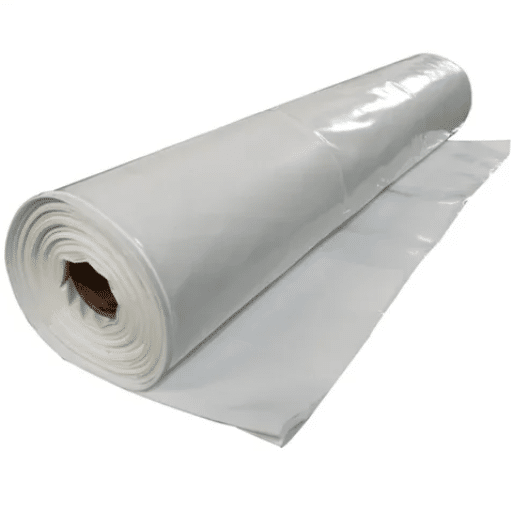
Uses in Construction and Home Improvement
10-mil plastic sheeting is often used in a number of construction and home improvement projects because it is moderately durable and flexible. Some of the more popular applications for plastic sheeting based on recent search trends include moisture barriers for floor installations, encapsulation of crawlspaces, and temporary waterproofing from the weather. The thickness gives the plastic sheeting enough strength to resist tearing and puncturing and hence it is used in some heavy and demanding applications like curing concrete or acting as vapor barriers for walls. It is preferred over the thicker variety by many professionals and some DIY users simply because it is much easier to handle. Another emerging use for plastic sheeting, based on search trends, is as a greenhouse cover, making full use of its ability to withstand environmental wear while transmitting light.
Crawl Space Vapor Barrier Solutions
Vapor barriers under crawl spaces are extremely essential to maintain homes in a healthy and moisture-free state. By analyzing Google’s most recent search trends data, it is evident that a growing number of homeowners are looking at polyethylene sheeting, particularly 6 mil and above, as a solution to crawl space moisture. One of the common questions asked is “How thick should a vapor barrier be?” Well, that depends; however, most standard 6 mil polyethylene will provide at least basic protection from moisture, while thicker barriers of 10 mil or 20 mil will be more durable and offer added resistance to punctures in heavy-foot-traffic areas or more aggressive environments. A proper vapor barrier will abate mold growth from moisture and increase insulation efficiency as moisture condenses in materials is a great insulator.
Vapor Barrier Benefits:
- Prevents mold growth
- Increases insulation efficiency
- Protects structural integrity
- Reduces moisture-related issues
Multi-Purpose Heavy Duty Plastic Sheeting
Heavy-duty plastic sheeting is quite adaptable, and hence, indispensable throughout industries. One frequently asked question is: “What are the specific applications of heavy-duty plastic sheeting?” The answer goes on and on. This highly durable material has countless applications in construction, ranging from vapor barrier uses to concrete curing and temporary enclosures. It also protects equipment, materials, or even vehicles in storage or transport. It can be applied in agriculture as greenhouse covers and silage wrapping. In homes, heavy-duty plastic sheeting is used for DIY projects, paint protection, and weatherproofing. Of late, more and more users have come to search engines for environmentally friendly variants made from recycled materials, as sustainability becomes a major factor across markets. In different situations, heavy-duty plastic sheeting provides a solution adaptable to varying demands.
Types of 10 Mil Plastic Products
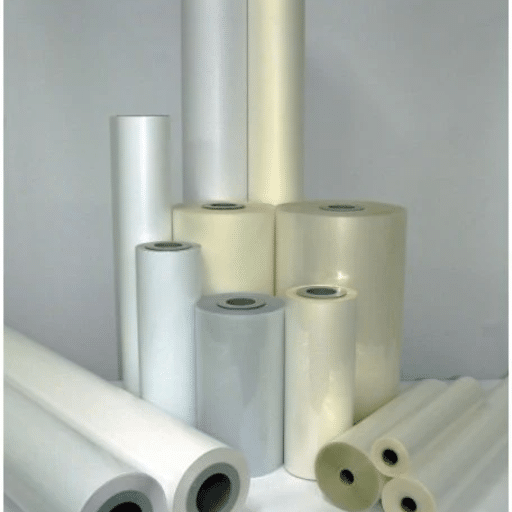
Clear Plastic Sheeting vs. Black Plastic Sheeting
Clear Plastic Sheeting
- Allows light transmission
- Ideal for greenhouses
- Window insulation applications
- Temporary construction barriers
- Visibility is important
Black Plastic Sheeting
- Blocks light completely
- Prevents weed growth
- Light-sensitive processes
- UV protection applications
- Light control essential
Clear plastic sheeting and black plastic sheeting have different applications, and knowing the differences can aid in better decision-making. Clear plastic sheeting is versatile and is selected for the application where visibility is important. For example, it may be used over greenhouses, window insulation, or temporary construction plastic barriers. Light passes through it, making it ideal in instances where light must go through.
Conversely, black plastic, because it does not allow light through, is mainly used for blocking light. It prevents weed growth in landscaping, is used in light-sensitive industrial processes, or serves, as with the white variety, as a cover to protect applications from UV ray exposure. Recent data speak of increased demand for these products, with users searching for applications related to weather resistance and environmental benefits. Consumers are also looking into heavy-duty options for both, for applications in recycling and long-term use, reflecting the demand for more durable and environmentally friendly options.
Heavy-Duty Rolls and Tarps
With the interest that has been shown by consumers according to the latest data from Google related to search patterns, applications of heavy-duty rolls and tarps that combined durability with sustainability are being sought in many different ways. The question often asked is, “How can heavy-duty rolls and tarps be used for protection and environment at the same time?” The answer is in the particular versatility of design and materials from which these use. Designed to resist harsh weather, this product protects against assets being soaked with rain and damaging UV rays and wind; at the same time, more of these products are being manufactured from recyclable or biodegradable materials, so they not only satisfy the practical need but also meet the growing market demand for an environmental alternative. With these two dependent priorities, heavy-duty rolls and tarps are great implements for industrial use, as well as for personal use.
Farm Plastic Supply Options
Farm plastics are available in several options that are tailored to the needs of agriculture, and recent search patterns show the growing interest toward sustainable options. Applications include common ones known as silage covers, greenhouse films, and row covers, all of which serve the purpose of protecting crops or enhancing the growth environment. Silage covers stop the degradation of forage by forming an airtight seal; greenhouse films control light transmission and temperature, allowing cultivation all year long; row covers protect crops against pests and harsh weather, increasing yield efficiency. Increasing numbers of these products are now coming in environmentally friendly versions in tune with agriculture’s present shift towards sustainability, thus representing both in terms of functionality and in terms of being environmentally friendly.
Benefits of Using 10 Mil Plastic
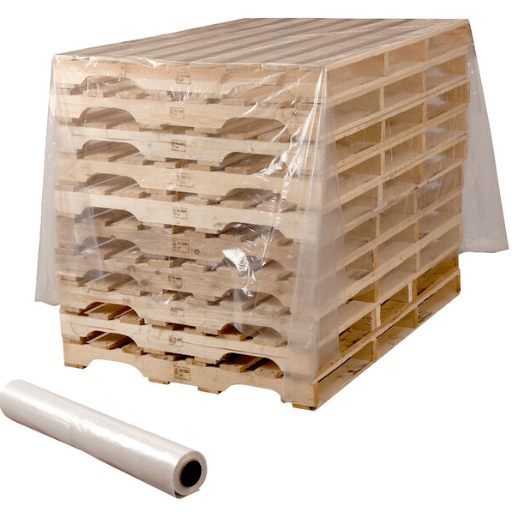
Durability and Strength
Made to enhance strength and durability, 10 mil plastic sheeting is the best alternative for agricultural and construction purposes. Thanks to its thickness, it offers an unparalleled resistance to tearing, puncturing, and abrasion, even under strenuous conditions. The most recent data on a Google search trend analysis indicates that people have been searching for strong plastic sheeting for goods that are meant to remain for long, especially where the weather is extreme. Withstanding harsh conditions thus results in eventual long life, which means less replacement costs over time, generating direct economic support towards the businesses and individual users.
Effective Vapor Barrier Properties
Plastic sheeting employed as a vapor barrier serves as a very good barrier to moisture transmission from one surface to another. This quality comes in handy in construction, where moisture control is key to keeping the structure intact and avoiding problems like mold and rot. From the latest data, gathered from the Google search engine, it shows that users commonly ask for the best plastics for vapor barriers in high humidity conditions. HDPE and LDPE top these lists due to their strong resistance to moisture and overall durability. Having given a strong shield against vapor transmission, the materials assure satisfactory use in both residential and commercial projects.
Cost-Effectiveness for Various Projects
Looking at the HDPE and LDPE cost-effectiveness for vapor barriers in various projects, both materials are good on value for money because of durability and resilience. HDPE is normally the material that commercial projects prefer because of the strength-to-density ratio it offers, which makes it able to live up to the demanding conditions for a long term thereby cutting down upon the maintenance costs. While LDPE, on the other hand, is more flexible and less costly and is suitable for smaller residential projects or areas that require a lot of pliability.
Material Comparison:
HDPE: Better for commercial projects, higher strength-to-density ratio, long-term savings
LDPE: More flexible, lower initial cost, suitable for residential projects
Users from the latest Google search data often ask about which material offers the best blend of costs and performances. The best answer would weigh upon the specific requirements of a project. Where there are massive projects with a bigger budget, HDPE is the one promising a long run of saving through robust features. Whereas LDPE makes way for economic projects in regard to flexibility and initial cost. Knowledge of the unique needs of a project allows one to factor in the best material for maximum efficiency and satisfaction in the long run.
How to Choose the Right Plastic Thickness
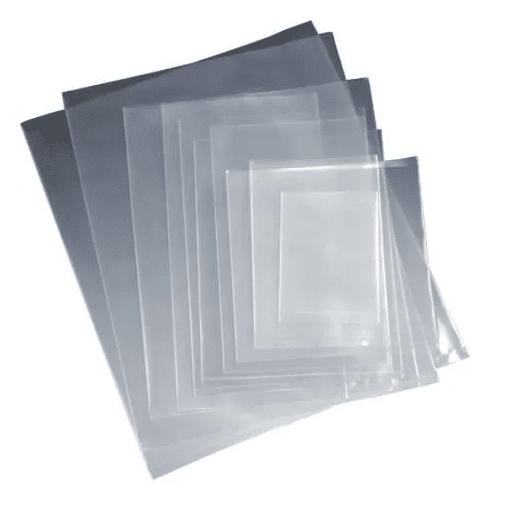
Factors to Consider When Selecting Mil Thickness
Many factors should be weighed when selecting proper mil thickness for plastic, with the objective of achieving performance and cost-effectiveness to the fullest. One factor to consider: how will the material be used? Thicker plastics, 6 mils or thicker, would carry more strength for heavy duty applications such as construction sheeting, agricultural covers, or industrial packaging. Thinner plastics, in the range of one to three mils, are more suitable for lightweight applications such as food packaging or temporary coverings.
Key Selection Factors:
- Application Type: Heavy-duty vs. lightweight use
- Environmental Conditions: Temperature, moisture, UV exposure
- Budget Considerations: Balance between cost and performance
- Regulatory Requirements: Industry-specific standards
Another factor to consider when selecting plastic thickness is the environment in which it is expected to perform. Some typical environmental conditions might have temperature extremes, high moisture levels, or UV exposure. For example, outdoors or harsh environmental conditions typically warrant the use of a heavy-gauge plastic with UV protection for longer life and good performance.
Lastly, apart from these, the cost factor makes an appearance. Thicker plastic films can present themselves as a more durable alternative but may cost more. In order to compensate for your budget, a balance should be sought between these and the functional requirements so as not to categorically waste more or buy less performing plastic.
Last but not least, any lawfully and industry-specific regulations will have to bear consideration. Food-grade plastics, for instance, must comply with certain health and safety legislation, and it could well be that plastic must have a minimum thickness. All factors analyzed will result in a choice of mil thickness that will suit the project most effectively and efficiently.
Specific Scenarios Leading to Thicker Plastic Sheeting Use
Anything that requires extra protection and care demands thicker plastic sheets. One of the most common applications is lining landfills to ensure containment. For instance, in construction, thick plastic sheets would be laid down over concrete foundations and walls as vapor barriers to seal in moisture, preventing it from escaping from either side of the concrete. In agriculture, plastic sheeting is laid as a cover for greenhouses, where it must withstand prolonged exposure to sunlight, wind, and rain, while retaining quite a bit of insulation.
Another environmental example is lining landfills or wastewater ponds. In such cases, a higher gauge of plastic is needed to resist punctures, tears, and exposure to chemicals caused by continuously threatened elements to secure angle applications under environmental regulations. Besides industrial packaging, thicker plastic sheets are used when shielding heavy machinery or equipment sensitive to impacts and vibrations during transportation or temporary storage.
Assessing factors like environmental exposure, weight of materials, and legal restrictions, in certain ways, will provide a rationale for using thicker plastic sheets as a means of offering durability and protection in such arduous scenarios.
Suggested Application Guidelines
When selecting types of plastic sheeting for particular applications, some key lessons learned from recent trends and published data should be considered. According to current trends, thin plastic sheeting, which is generally 2 to 6 mils thick, is suitable for most applications requiring surface protection during painting, short-term weatherproofing, or light packaging. These thin versions are less expensive and therefore promote the use of fewer resources.
For industrial uses where increased weight and exposure to harsher environmental conditions are factors, thicker plastic sheeting in the range of 10 to 20 mils is preferred. This thicker sheeting provides extra durability against tear, punctures, and degradation from UV, thereby protecting heavy equipment for covers or long-term storage.
Consequently, with recent developments, bearing in mind the importance of sustainability has promoted biodegradable and recycled plastic sheeting to a place of preference in a number of applications. The incorporation of these types can positively respond to the environmental goal while maintaining the functionality required for a particular project. Making use of these practical lessons from current data can assist in making strategic decisions shaping individual and industrial needs.
Frequently Asked Questions
How Thick is 10 Mil Plastic?
10 mil thickness of plastic is used commonly for varying jobs, including construction work and gardening. One mil measures one-thousandth of an inch, so the 10 mil plastic sheeting is 0.010-inches thick. The plastic sheeting exhibits strength in balance with flexibility for covering greenhouses, for example, or being used as a moisture barrier for crawl space encapsulation. The customer says they find it strong enough for applications that are heavy-duty, such as construction enclosures and vapor barrier coverings. Be it black plastic tarping or plastic drop cloths, 10 mil plastic sheeting would do it well.
What Thickness of Plastic Sheeting is Measured in Mil?
The thickness of plastic sheeting is often measured in mils, with 1 mil being 0.001-inch in thickness. Common thicknesses include 4 mil, 6 mil, 8 mil, and 10 mil, with each thickness meant for different work. For instance, a heavy-duty 10 mil plastic sheet is thick enough to serve as a vapor barrier, while light-duty 4 mil plastic sheeting would be adequate in much less demanding applications. Knowledge of the various thickness types helps you choose the right polyethylene film for your project, whether it be a greenhouse or a construction site.
What is a Vapor Barrier and How Does it Work?
A vapor barrier is a material used to restrict moisture movement into the constructions, so condensation and mold can grow. A 10 mil vapor barrier plastic is most effective in crawl spaces and basements where moisture can create problems. With heavy-duty 10 mil plastic sheeting, a firm barrier to help keep your place dry can be ensured. It is crucial to use such barrier covering for protecting insulation and structural elements in crawl spaces. However, depending on what is required for your project, different thicknesses like 20 mil or 8 mil can be used.
What Are the Advantages Associated with Thicker Plastic Sheeting?
Thicker plastic sheeting such as 10 mil or 20 mil would provide a high level of puncture and tear resistance and durability, making it suitable for heavy applications like construction or greenhouse plastic covers. Thicker polyethylene vapor barriers could better hold away moisture, an important consideration in crawl space encapsulations. Another benefit of employing thick plastic sheeting rolls is long endurance, thus limiting serious replacement instances. For specific applications, particularly in black vapor barrier installation, thicker ones perform much better than the thin ones.
What is the Difference Between 10 Mil and Other Thickness of Plastic Sheeting?
The basic difference lies in their strength and the performance they are designed to offer, being 10 mil, 4 mil, or 6 mil plastic sheeting. 10 mil plastic sheeting is much thicker and more resistive to wear and tear and is, therefore, useful in the heaviest-duty tasks such as construction plastic sheeting or as a moisture barrier in crawl spaces. Alternatively, the less durable options such as 4 mil plastic sheeting are otherwise preferred in pretty much all work that does not require a lot of durability, including temporary coverings or drop cloths for paint. The right one to choose depends on what you are specifically going to need and under what circumstances.
Reference Sources
- A Global Inventory of Small Floating Plastic Debris
This study provides insights into the properties and measurements of plastic debris, which can be relevant for understanding plastic thickness and its applications.
Read the article on IOP Science - Plastic Publishing in Embryology
This book discusses the use of plastic materials in various applications, including their thickness and properties, providing a historical and technical perspective.
Read the book on Books - TiO2 Pigment Technology: A Review
This review explores the use of plastic laminates and their thickness in industrial applications, offering insights into material properties and usage.
Read the article on ScienceDirect

